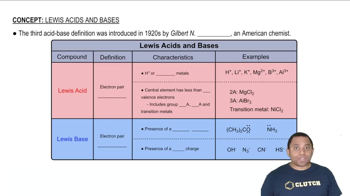Here are the essential concepts you must grasp in order to answer the question correctly.
Titration
Titration is a quantitative analytical technique used to determine the concentration of a solute in a solution. It involves the gradual addition of a titrant (in this case, KOH) to a solution of analyte (H3PO4) until the reaction reaches its equivalence point, where stoichiometrically equivalent amounts of acid and base have reacted. The pH changes during this process can be monitored to determine the endpoint.
Recommended video:
Acid-Base Neutralization
Acid-base neutralization is a chemical reaction between an acid and a base that produces water and a salt. In this titration, H3PO4, a triprotic acid, reacts with KOH, a strong base. The reaction can be represented as H3PO4 + KOH → K2H2PO4 + H2O, and understanding the stoichiometry of this reaction is crucial for calculating the resulting pH after specific volumes of KOH are added.
Recommended video:
pH Calculation
pH is a measure of the acidity or basicity of a solution, defined as the negative logarithm of the hydrogen ion concentration (pH = -log[H+]). In titrations, the pH can change significantly depending on the amount of acid and base present. After adding a specific volume of KOH, the pH can be calculated using the concentrations of the remaining acid and the produced salt, as well as the dissociation of water, especially near the equivalence point.
Recommended video:




